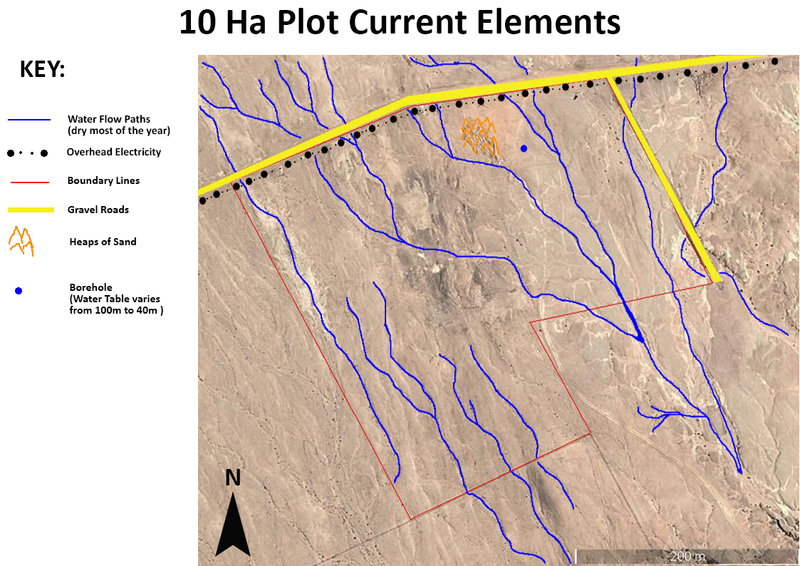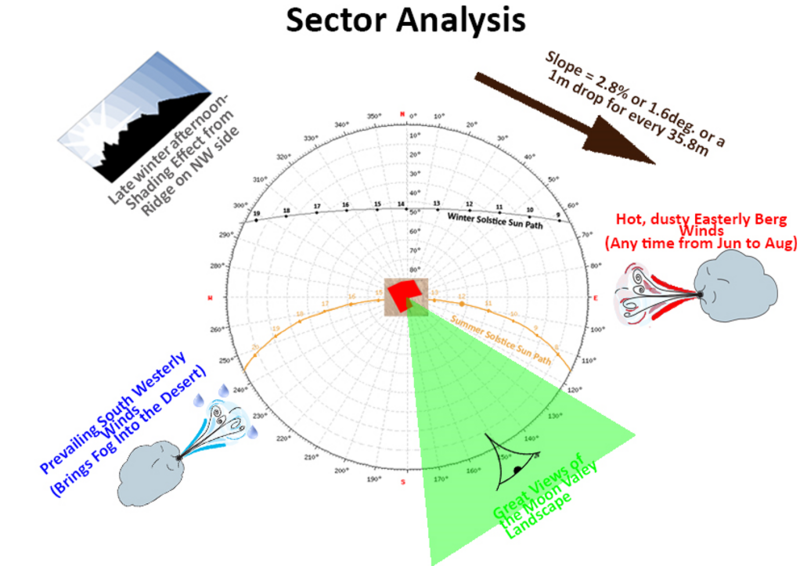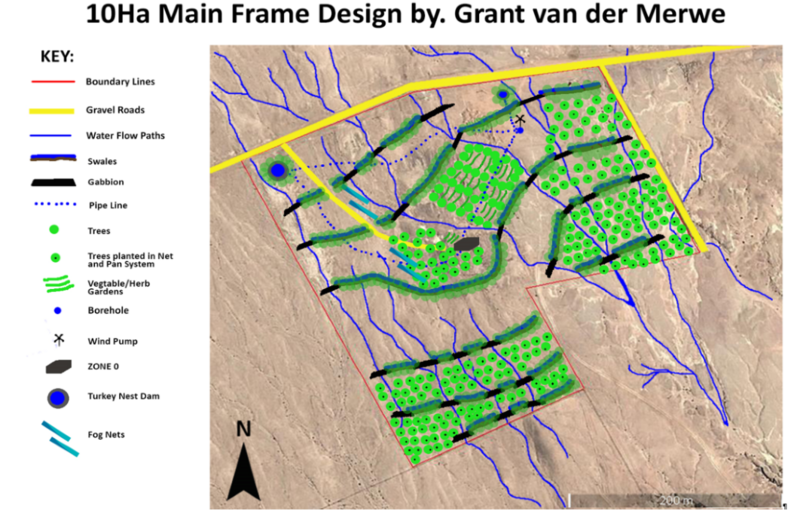


|
Commenced:
|
01/11/2016 |
|---|---|
|
Submitted:
|
13/11/2023 |
|
Last updated:
|
13/11/2023 |
|
Location:
|
Plot 144, Swakop River Plots, Swakopmund, Erongo Region, NA |
|
Phone:
|
0813774814 |
|
Website:
|
https://www.facebook.com/gandaservicesandfarming/ |
|
Climate zone:
|
Arid |
(projects i'm involved in)
Back to Plot 144 - Green and Abundant Farming (Namib Desert)
Project: Plot 144 - Green and Abundant Farming (Namib Desert)
Posted by Grant Van der Merwe about 1 year ago
Due to lack of interest in social media and the general availability of time (we are full time employed in 8to5 jobs). We have implemented varias aspects of our "homestead" at Plot 144 over the past few years. This update serves to get all the readers up to speed on the current status of the project, and we will be updating it as time allows.
12/02/2024
Sad News
We made a fundamental error, and stored all of our pictures of the progress of the property on one hard drive since the time we started (over ten years ago). Our hard drive crashed and we are unable to access the information on it at this point in time :-(
We have now over the past few months scratched through all our phones and media on all our systems, and are greatfull that we still have quite a few pictures to share, albeit at poorer quality, and potentially not the full progression as we would have loved to share with you. But, the hope is that it will get you the reader to a point where you understand where we are currently.
The Original Design
As with all things, one needs to start at the basis.

The property is situated at 22°37’50.89”S 14°41’54.05”E in the Namib Desert (oldest desert in the world). The property is at an elevation of 126m above sea level and is situated in an area known as Richthofen, along the Swakop River, overlooking the moon valley landscape. The Atlantic Ocean has a maritime effect on the property as it is only 18.4km away from site.

The Swakopmund Area is said to enjoy a mild desert climate, with average temperatures ranging from 15°C to 25°C. The lowest temperature of 1°C was recorded in Jul and August, and the highest temperature was recorded as 40°C in May. It is not uncommon for temperatures to go above 30°C in the summer months of Dec, Jan and Feb.
Average rainfall is less than 20mm per year with 0mm readings not being uncommon. There is, however, another supply of moisture to the desert in the form of mist/fog. The cold Benguela current supplies moisture for the area in the form of fog that can reach as deep as 140 km (87 mi) inland. Fogs that originate offshore from the collision of the cold Benguela Current and warm air from the Hadley Cell create a fog belt that frequently envelopes parts of the Namib desert. Coastal regions can experience more than 180 days of thick fog a year.
The predominant wind in the area is a South Westerly wind, that can reach speeds up to 20m/s. This wind brings in cool moist air of the Atlantic Ocean (as mentioned above).

Another phenomenon that occurs with regards to wind is known as the East Wind Conditions by the locals. This is when cold air from the inland sinks down to the coast during the winter months (known as berg winds). Once the wind reaches the ocean it has heated up significantly and picked up a lot of dust and sand from the desert, and it is not uncommon to have temperatures above 30°C in the Autum/Winter months of May, June, July and August, making the growing of deciduous species quite challenging.

This was my original mainframe design submitted for my PDC in 2013. Not my best work, but the concepts remain the same. Main water harvesting structures (still to be installed as finances allows), includes fog nets and swale and gabbion systems to intercept any possible water flows accross the property. As we have lived on the property things have eveolved and as such the design in being updated. Further details on the design will be covered in its own category under the project as "Design Details".
We currently use desalinated water supplied by our local municipality as a means of hydrating the landscape and getting systems implemented.
To keep the update short, we will continue updating in new posts, as we learn to Navigate through this PRI global site.
You must be logged in to comment.


















































Note: The various badges displayed in people profiles are largely honesty-based self-proclamations by the individuals themselves. There are reporting functions users can use if they know of blatant misrepresentation (for both people and projects). Legitimacy, competency and reputation for all people and projects can be evidenced and/or developed through their providing regular updates on permaculture work they’re involved in, before/after photographs, etc. A spirit of objective nurturing of both people and projects through knowledge/encouragement/inspiration/resource sharing is the aim of the Worldwide Permaculture Network.
 |
MemberA member is a permaculturist who has never taken a PDC course. These cannot become PDC teachers. Members may be novice or highly experienced permaculturists or anywhere in between. Watch their updates for evaluation. |
|---|---|
  |
Permaculture MatchmakerOne of these badges will show if you select your gender and the "I'm single, looking for a permaculture partner" option in your profile. |
 |
PDCPeople who claim to have taken a Permaculture Design Certificate (PDC) course somewhere in the world. |
 |
PDC VerifiedPeople who have entered an email address for the teacher of their PDC course, and have had their PDC status verified by that teacher. Watch their updates for evaluation. |
 |
PRI PDCPeople who’ve taken a Permaculture Research Institute PDC somewhere in the world. |
 |
PDC TeacherPeople who claim to teach some version of PDC somewhere in the world. |
 |
PRI TeacherWith the exception of the ‘Member’ who has never taken a PDC, all of the above can apply to become a PRI PDC Teacher. PRI PDC Teachers are those who the PRI recognise, through a vetting board, as determined and competent to teach the full 72-hour course as developed by Permaculture founder Bill Mollison – covering all the topics of The Designers’ Manual as well as possible (i.e. not cherry picking only aspects the teacher feels most interested or competent in). Such teachers also commit to focussing on the design science, and not including subjective spiritual/metaphysical elements. The reason these items are not included in the PDC curriculum is because they are “belief” based. Permaculture Design education concerns itself with teaching good design based on strategies and techniques which are scientifically provable. PRI PDC Teachers may be given teaching and/or consultancy offerings as they become available as the network grows. |
 |
Aid WorkerThe individual with this badge is indicating they are, have, or would like to be involved in permaculture aid work. As such, the individual may or may not have permaculture aid worker experience. Watch their updates for evaluation. |
 |
ConsultantThe individual with this badge is indicating they are, have, or would like to do paid permaculture design consultancy work. As such, the individual may or may not have permaculture consultancy experience. Watch their updates for evaluation. |
 |
Community ProjectCommunity projects are projects that help develop sustainable community interaction and increase localised resiliency. |